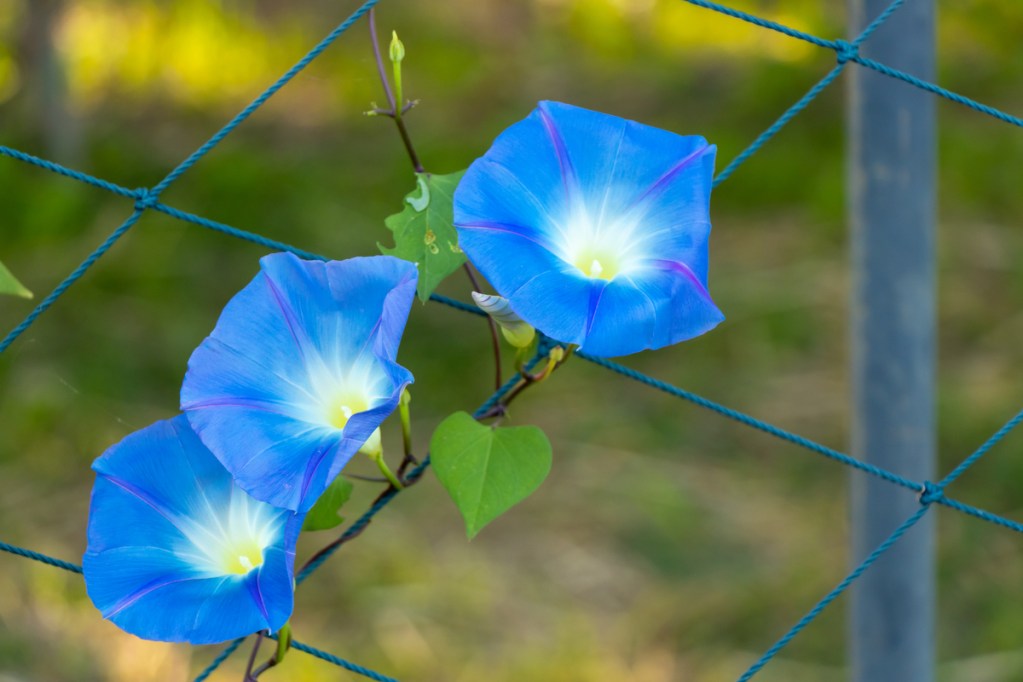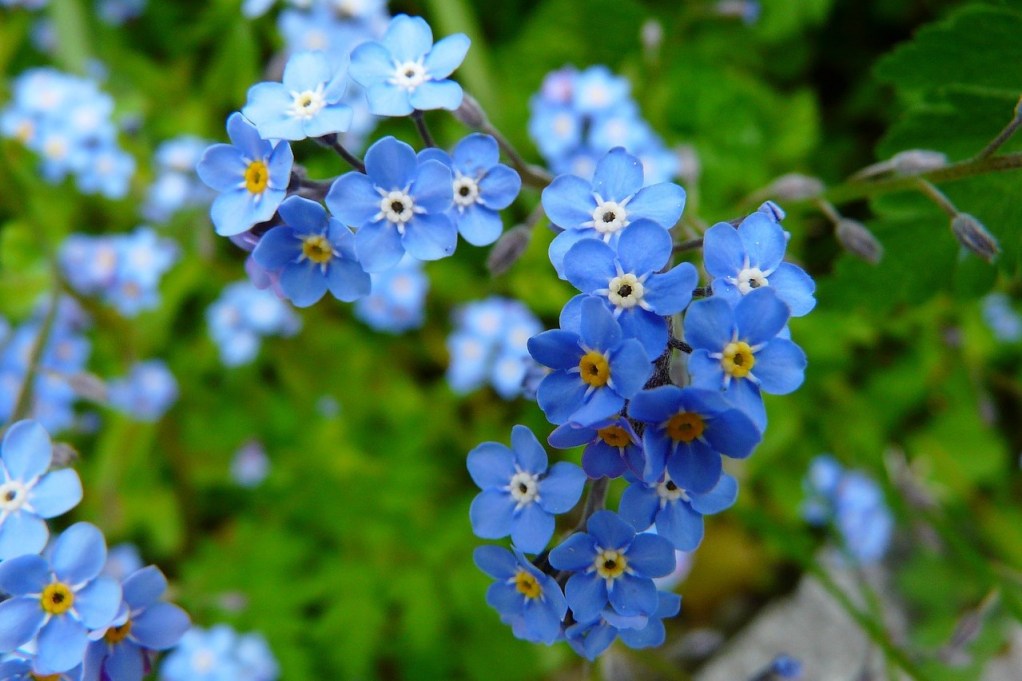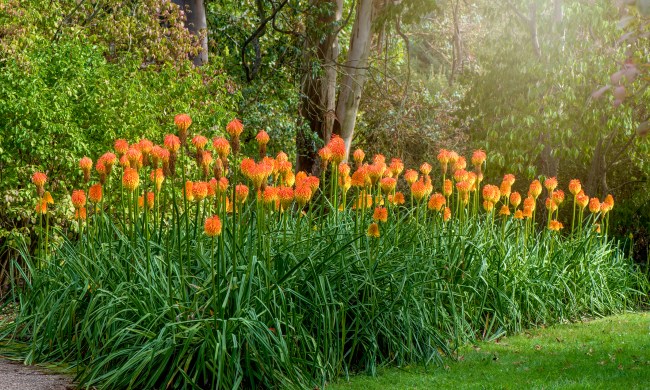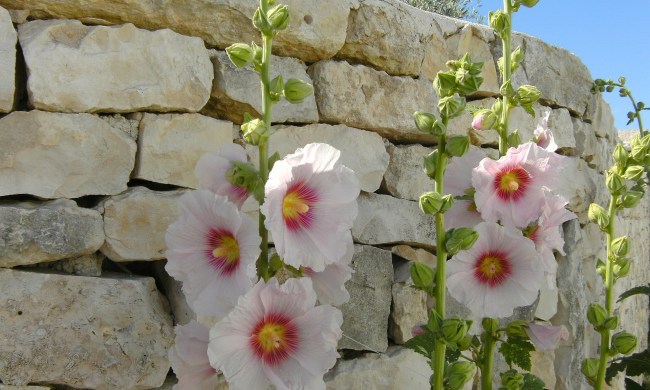There are flowers in just about any color you can imagine, and every color has certain emotions it is associated with. Blue is sometimes associated with sorrow, but it can also be calming, serene, and whimsical. If you want to add a bit of tranquility to your home or garden, then you’re in luck. Here are our six favorite blue flowers to make your garden a more calming and relaxing place to spend time. Whether you want to grow blue flowers outdoors or inside, there’s something on this list for everyone.
Bluebell

Bluebells are iconic flowers, known for their sweet appearance and small size. These lovely perennials are actually wildflowers from the U.K., but they’ve had a long history of garden cultivation in the U.S. as well. They prefer rich, well-draining soil and light or dappled shade, since they’re native to woodland environments.
These blue flowers can also grow in containers, which can help control the spread of this non-native plant. If you’d rather grow a native alternative, there is a look-alike plant that is native to the U.S. The Virginia bluebell isn’t related to true bluebells, but they look similar and have the same care requirements.
Morning glory

If you want blue flowers for your hanging basket or vertical garden, then morning glories are the perfect plant. They come in a range of colors, including several shades of blue and some two-toned or multicolored varieties. Since they open early in the morning and close by afternoon, morning glories are particularly good choices for early risers who want to enjoy their gardens before getting into a busy day.
They prefer rich, well-draining soil, and morning sun with afternoon shade. Be aware that morning glories will climb, and if you don’t provide them something (like a trellis), they will find something!
Forget-me-not

Forget-me-not, or scorpion grass, is a delightful and sweet little flower, perfect for container gardens and garden borders. While you might think you already know about forget-me-nots, you might not be aware of just how many different species and varieties there are. There are species of forget-me-nots that are native to Europe, North America, and parts of Asia.
In addition to the sweet pastel blue of a typical forget-me-not, flowers can also be white or light pink. They are also quite hardy and easy to grow, only needing moist, well-draining soil and full sun to light shade in order to thrive.
Globe thistle

If you want something a little less sweet and a little more unique, then consider planting globe thistles. Also called echinops, this interesting flower is actually in the aster family, although it doesn’t look like it. With round, spiky-looking flower heads and leaves with spines, globe thistles make for a unique garden centerpiece.
The flower heads consist of many small flowers, which are attractive to pollinators. However, echinops is not native to the U.S., so skip this plant if you’re looking to grow an entirely native garden. You can grow it in a container if you choose, just take care when moving it to avoid the spiny leaves! Echinops does best in full sun, warm weather, and well-draining soil.
Hydrangea

Hydrangeas are classy, elegant, and fairly easy to grow. They can be white, blue, purple, and pink, and some can even change color. If you have a color-changing species (such as a bigleaf hydrangea), then making your soil slightly more acidic can give you beautiful blue hydrangeas.
If your hydrangeas aren’t a color-changing species, then soil pH is less important. Instead, focus on providing rich, well-draining, loamy soil and place them in partial to full sun. Hydrangeas are small to medium shrubs, so they can grow in containers but often do better when planted in gardens, where they have more room to spread.
Plumbago

If you love the sweet look of forget-me-nots, but wish the plants were bigger, then you should try growing plumbago. This shrub is native to South Africa, so it is difficult to grow in the northern States. However, if you live in USDA hardiness zones 9 to 5, then you’re in luck! Plumbago has lovely light blue flowers that resemble forget-me-nots or woodland phlox, but they cover a shrub that can grow up to 10 feet tall under the right conditions. Plant your plumbago in well-draining soil and full sun for the best results.
These six gorgeous blue flowers can help add some calm vibes to your garden or home. Whether you want something simple and elegant or unusual and interesting, there are blue flowers to suit your style. Of course, if you want more than just blue in your garden, why not pair your new blue flowers with some lovely purple flowers? They’ll look incredible together.




